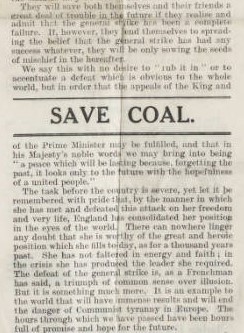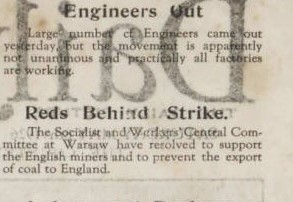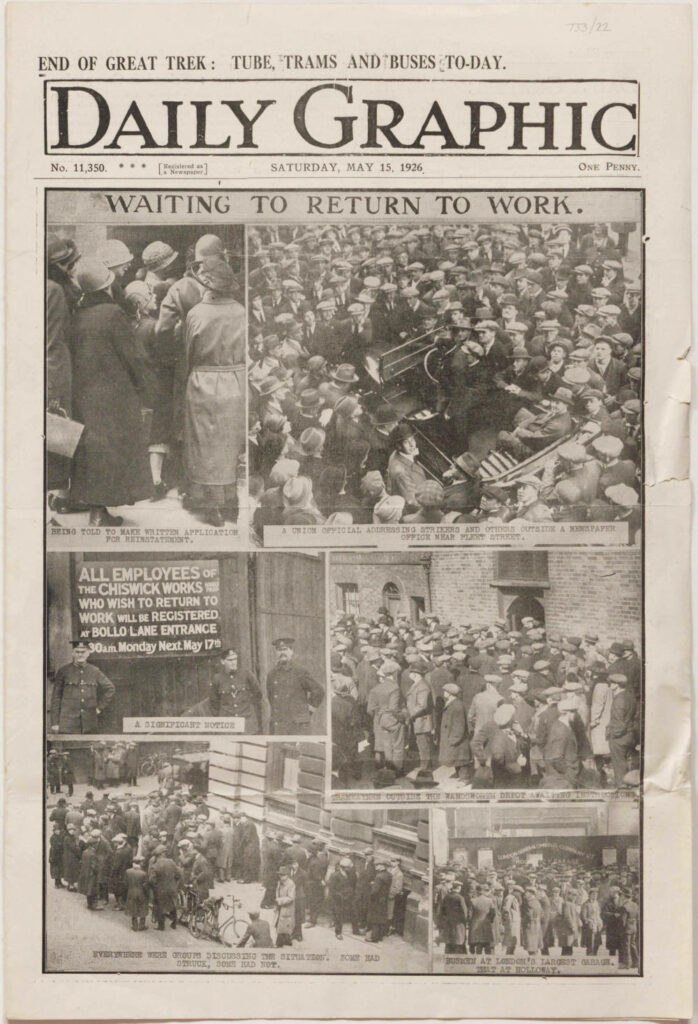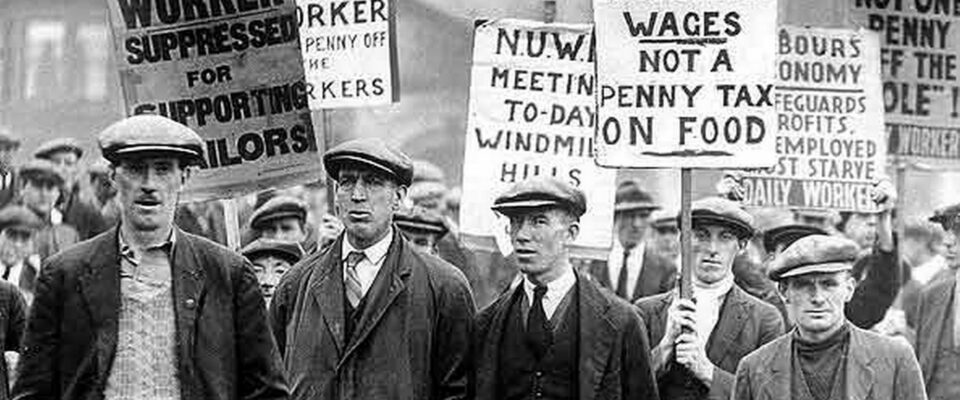On May 3, 1926, the UK Trade Union declared a General Strike in sympathy of striking coal miners. The Coal Miners decided to strike because their bosses, the Coal Barons, decided to cut their wages and worsen their working conditions in response to decreased demand for English Coal and English economic woes. During the strike over two and a half million men left their work in support of the coal miners.1 The decision of the Coal Miners Union, the Trade Union and the Coal Barons decisions were all apart of the general themes of the 1920s. When people think of the 1920s in America and the UK usually imagine it as the roaring 20s. A time in which people partied their hearts out and wildly dressed flappers roamed the streets. At the same there was a battle going on. A battle between the workers who were trying to keep the rights they gained in the decade before and the conservative governments and their big business backers who wanted to make as much money as possible. The 1920s was one of the worst times for Unions because of the companies and conservative governments cracking down on Unions2

The Red Scare, the public’s fear of Communism thanks to the Revolution in Russia, was one way in which labors’ losing battle against big business in the 1920s was fought. The Red Scare had made people think twice about joining unions and forced the already existing unions to tread carefully in the policies that they support.3 The government and big businesses took full advantage of this fear that the public had during the strike to turn the public against the Unions. In multiple newspapers across the UK, the strikers were called radical socialists and communists to reduce public support for them. For example, in an issue of the Daily Mirror published on May 8th there is a section called “Reds Behind Strike” where they wrote that the Communist Party in Warsaw supports the General Strike.4 Another newspaper, the Daily Mail, published on May 14th, under an article called “England’s Example”, wrote that “the defeat of the general strike…will end the danger of Communist tyranny in Europe”5 These articles twist the truth of the strike to make them seem more aligned with Communists to play on the public’s fear of Communism in attempt to put them against the strikers.


This was a losing battle for the Unions though as everyone was against them. In the United States when in 1924 Pittsburgh’s Coal Union tried to go on strike they were met with evictions and armed guards that broke their union. 6 The Trade Union in the UK didn’t fare much better when they decided to go on strike in 1926. The government got a judge to declare the strike illegal which had the effect of freezing payments to workers who were illegally striking. 7 This handed the victory to the government and big business as the Trade Union hands were now tied. Their workers could no longer get paid, they could lose their jobs, and even get arrested. There was no chance now that the workers were going to get any concessions and were going to have to accept the wage cuts. The Trade Union decided to call off the strike on May 12 and the next day most contracts were renegotiated with the strikers having to admit the strike was wrong as part of their negotiation.8 With that and other action taken by the government after the 1926 General Strike became apart of the larger 1920s narrative of labor losses and business victories.

- Melvin C, Shefftz “The Trade Disputes and Trade Unions Act of 1927: The Aftermath of the General Strike.” The Review of Politics 29, no. 3 (1967): 387, http://www.jstor.org/stable/1405763. ↩︎
- Lynn, Dumenil, Modern Temper, (New York: Hill and Wan, 1995), 63. ↩︎
- Ilbd, 63-64. ↩︎
- “Reds Behind Strike”,Daily Mirror (London, UK), 8 May 1926 https://cdm21047.contentdm.oclc.org/digital/collection/strike/id/191/rec/7 ↩︎
- “England’s Example”, Daily Mail (London, UK),14 May 1926, https://cdm21047.contentdm.oclc.org/digital/collection/strike/id/566/rec/9 ↩︎
- Dumenil, Temper, 63 ↩︎
- D. H. Robertson. “A Narrative of the General Strike of 1926.” The Economic Journal 36, no. 143 (1926): 375–93. https://doi.org/10.2307/2959789. ↩︎
- Shefftz, “Trade Disputes”, 392 ↩︎

